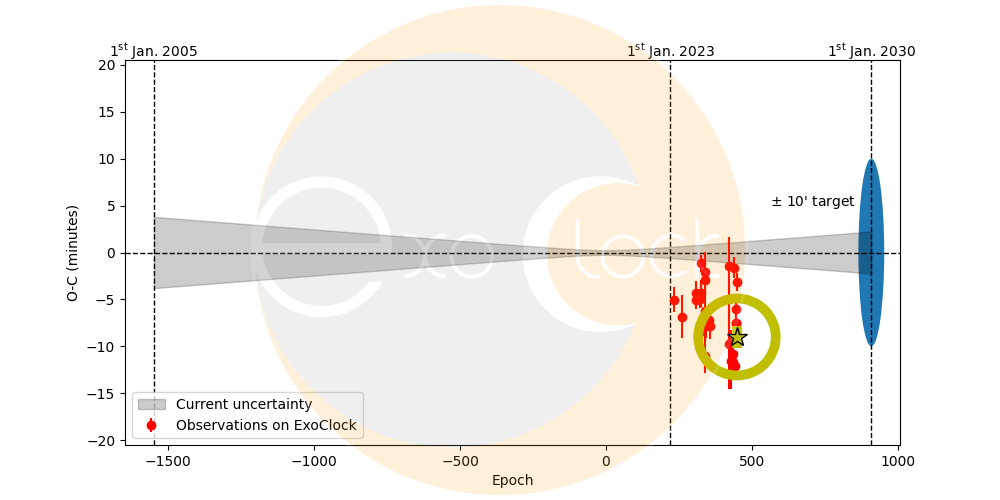Contribution by Dr. Gerold Holtkamp, June 2025
The exoplanet and its parent star are located in the constellation Coma Berenices. The measurements were taken from 23:00 UTC on April 27, 2025, to 2:54 UTC on April 28, 2025, in Osnabrück, Sonnenhügel. The Moon was illuminated at 0.2% and therefore not obstructive.
The measurement technique used:
Telescope: Skywatcher Newton 250/1200 mm
Mount: Skywatcher AZ-EQ6
Filter: Luminanz (Antlia)
Camera: QHY268M with gain 60, offset 20, chip temperature -10° C
Guiding: Skywatcher Guidescope Evoguide 50 ED with camera ZWO ASI120mm
NINA was used for camera and mount control.

The present measurement and the subsequent evaluation with the hops software of the Exoclock-Project resulted in:
Rp/Rs = 0.1322 +/- 0.0026 (expected 0.13272 +/- 0.00072) *
à Rp = 0.1322 x 535,485 = 70,791 +/- 1,392 km. [1]
The exoplanet TOI-1811b is thus as large as Jupiter (radius = 69,911 km). However, due to the small size of its parent star, a relatively large dip in the transit light curve is observed. The system is 417 light-years from Earth.

The value of the transit's midpoint, which is important for the Exoclock project and is expressed as the difference between the observed and expected values, is significantly lower than the expected value at O-C = -9.01 +/- 1.22 minutes**. However, this is true for almost all other measurements on Exoclock.
The measurement of the transit light curve of the exoplanet Qatar-1b was published on the Exoclock project website. [2]
_____________________________________________________________________
* [Rp = Rplanet, Rs = Rstar]
If the star's radius is known, the planet's radius is determined directly from the dip in the light curve. (see also https://kosmos-os.de/messung-der-transitlichtkurven-der-exoplaneten-wasp-84b-und-kps-1b-am-7-und-8-maerz-2024)
** [O = Observed, C = Calculated]
[1]
Data on the star system and the exoplanet at
https://exoplanetarchive.ipac.caltech.edu/overview/toi-1811
The radius of the parent star was taken as 0.769 +0.019/-0.017 (Rodriguez et al. 2023) x the radius of the Sun. The radius of the Sun was assumed to be 696,340 km. The parent star therefore has a radius of 535,485 km.
[2]
https://www.exoclock.space/database/observations/TOI-1811b_2490_2025-04-28_Gerold_1561_Lum/